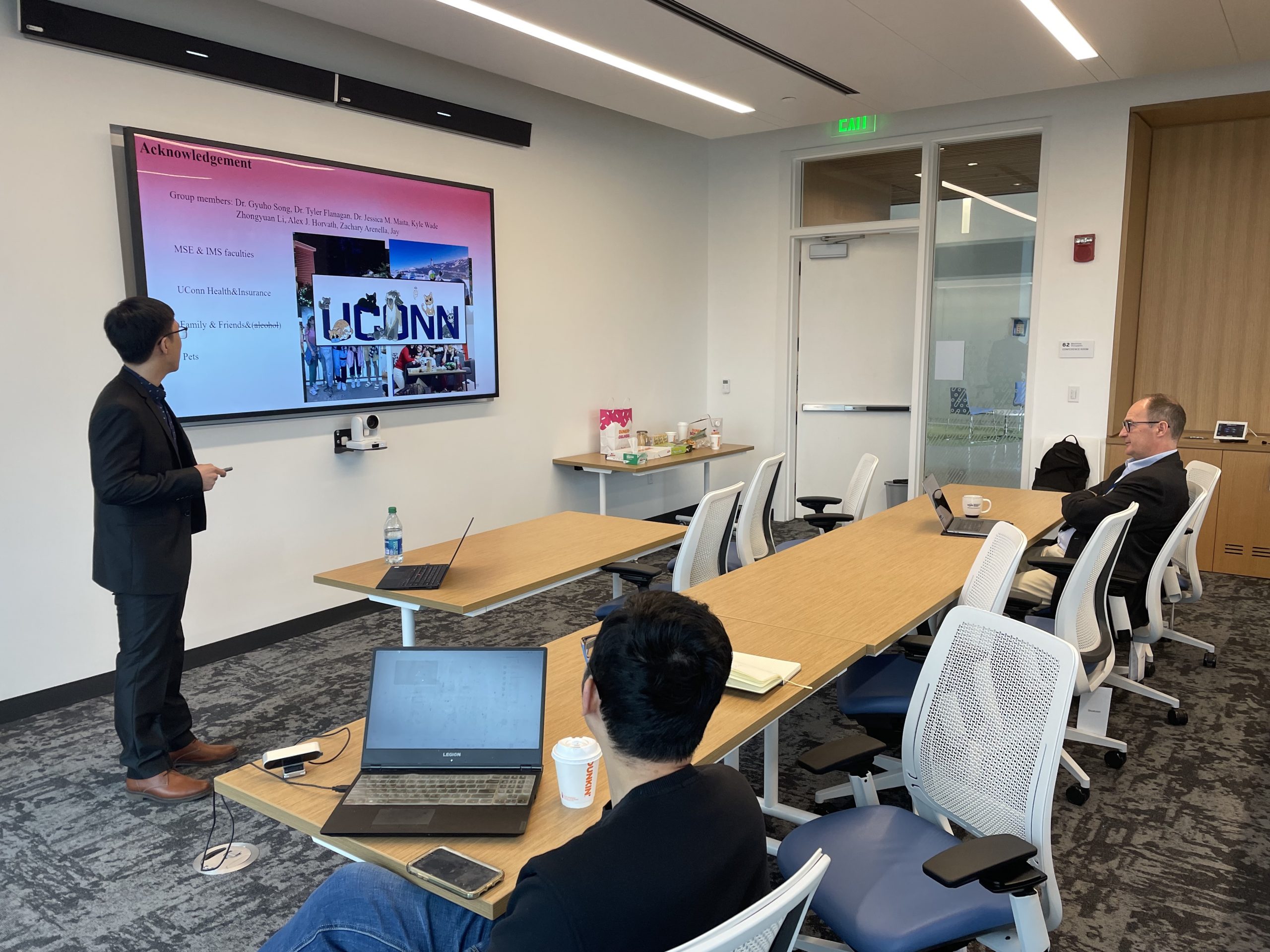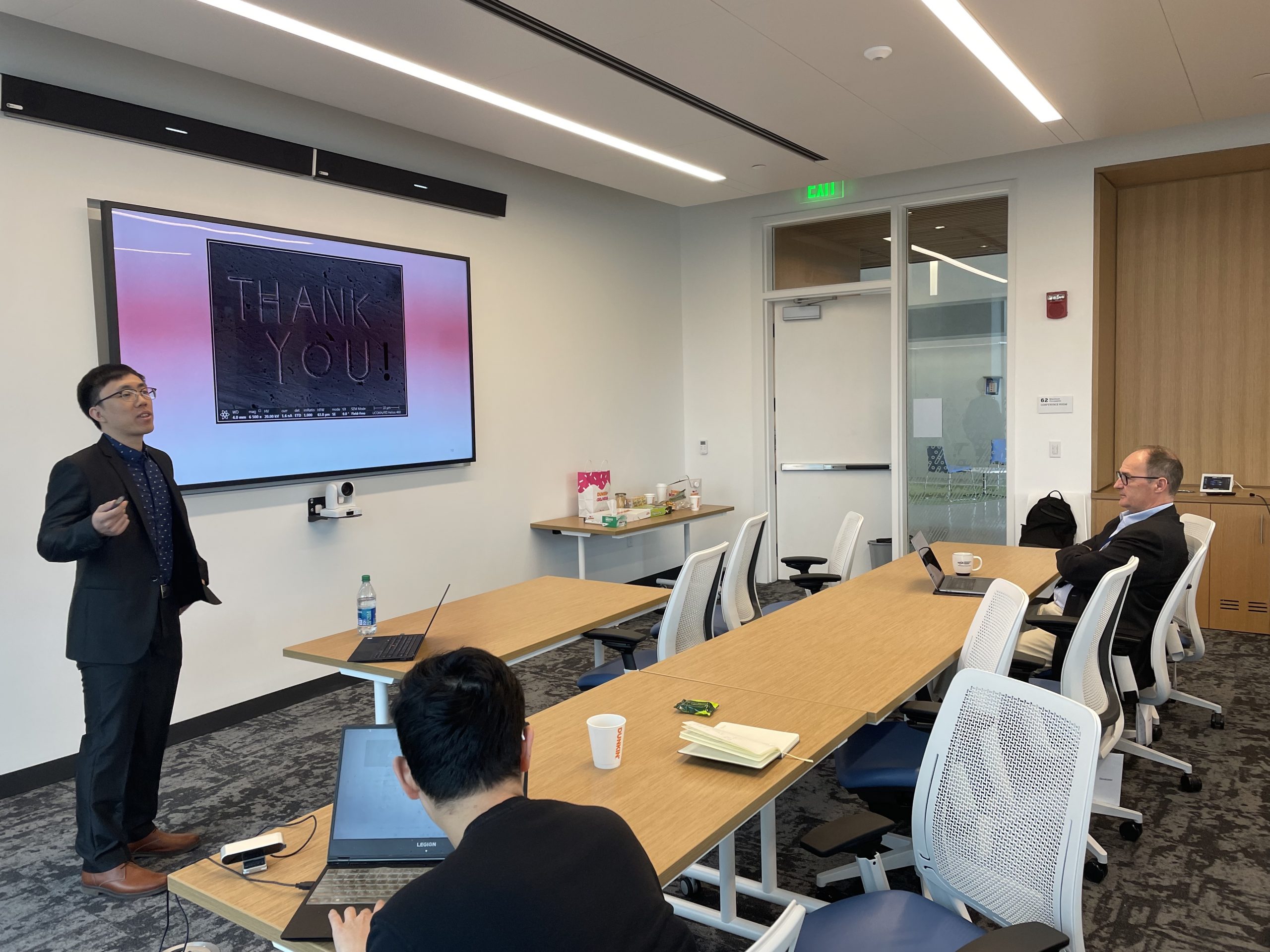Shuyang finished his PhD defense successfully. Many congratulations!
He gave a wonderful presentation on mechanical properties of SrNi2P2 single crystals, which show unusual superplastic behavior via lattice collapse and expansion. He has investigated tension-compression asymmetry, temperature effect, and composition effect.
Title: Mechanical behavior of SrNi2P2 single crystals at small length scales
Committee:
Prof. Seok-Woo Lee (major advisor)
Prof. Mark Aindow
Prof. George Rossetti Jr.
Prof. Rainer Hebert
Prof. Jasna Jankic
Date/Time: Wednesday, April 5, 2023. 10:00 AM
Location: Science One 1002
Abstract: Elastic strain limit, which is the measure of the maximum allowed fractional change in material length before a permanent shape change occurs, is the quantity used to describe the elastic deformability of materials. Superelasticity is the recoverable deformation associated with the reversible structural transition, which often leads to the large maximum recoverable strain. Achieving superelasticity is important for various engineering applications, which require a reliable impact protection, strain engineering, elastocaloric effect, and shape memory effect. In 1985, Hoffmann and Zhang postulated the possibility of forming and breaking Si-type bonds in ThCr2Si2-structured intermetallic compounds under uniaxial deformation along their c-axis, which could lead to superelasticity via the unique reversible structural transition, lattice collapse and expansion, respectively. By reviewing crystallographic data of a wide variety of known ThCr2Si2-structured compounds, SrNi2P2 has been identified as one of the most likely candidates to have a relatively small critical stress of structural transition, which would allow us to observe the structural transition and superelasticity before fracture occurs.
In this study, micro-compression test, micro-tensile test, and nanoindentation were conducted on SrNi2P2 single crystals along c-axis direction and confirmed that superelasticity indeed occurs through the lattice collapse and expansion process that Hoffman and Zhang suggested. This unique structural process enables excellent fatigue resistance and the efficient elastocaloric cooling. The phase diagram in stress-temperature space was also constructed with cryogenic mechanical data. In addition, the critical role of anisotropic residual stress, which could be developed by a doped element, in superelasticity and plasticity has been identified. It is noteworthy to mention that theoretical calculation predicts the presence of ~2500 ThCr2Si2-type intermetallic compounds. Therefore, all the results not only provide a fundamental insight into the understanding of the structure and mechanical properties of SrNi2P2 but also suggest a strong possibility to discover another superelastic ThCr2Si2-type intermetallic compounds. This new class of superelastic materials could be useful for the development of impact-resistant materials for structural applications, cryogenic linear actuators for space engineering, and elastocaloric cooling systems for refrigeration.



